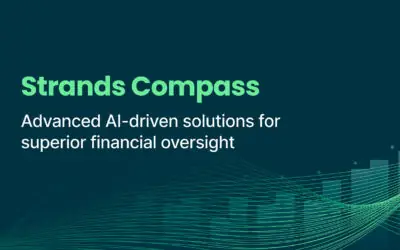- Environmental consciousness is increasing among generations and industries, pushing governments towards a circular economy model.
- In the last decade, policies like the 2020 green investment plan have stressed the need to evolve towards a sustainable banking landscape.
- ESG in finance poses challenges and opportunities for banks to improve brand, customer experience, impact on society and the environment.
- Financial institutions can now help their customers understand their spending emissions and offset them, on top of reducing emissions internally.
The undeniable potential of sustainable banking
As the practice of incorporating environmental, social and governance (ESG) considerations into banking operations and decision-making, sustainable banking, or green banking, paves a multi-strategic road. It has become an approach that cannot be disregarded anymore, not only in light of the consumers’ demand in its direction, but also considering the wide range of benefits that it entails for banks and financial institutions:
- Positive impact on society and the environment: sustainable banking helps promote environmentally-friendly and socially responsible projects and initiatives, with a positive impact on society and the environment.
- Customer attraction and retention: banks adopting sustainable banking practices are more appealing to customers who are interested in the social and environmental impact of their financial decisions.
- Improved reputation and brand image: banks that are seen as leaders in sustainable banking practices will enjoy a better reputation and stronger brand image in a whole world striving for sustainability.
Regulatory framework towards a circular economy
ESG in finance is a matter that has gotten to the top of the regulatory agenda, as fears that industries would lose sight of it due to the COVID-19 pandemic are fading. The crisis has highlighted that different levels of society are vulnerable, business sectors are deeply interconnected, and, as a main priority, the planet needs to be saved. Let’s look back to what happened in the last decade:
- In 2015, international agreements were concluded with the adoption of the UN 2030 agenda and sustainable development goals and the Paris climate agreement. The Paris climate agreement, specifically, includes the commitment to align financial flows with a pathway towards low-carbon development.
- In 2019, the Commission presented the European green deal, a growth strategy aiming to make Europe the first climate-neutral continent by 2050.
- Right before the start of the pandemic, as part of the green deal, the European Commission presented the European green deal investment plan, which will mobilize around €1 trillion of sustainable investments over the next decade. The goal of this plan is to create a favorable environment to stimulate the public and private investments needed for the transition to a climate-neutral, green, competitive and inclusive economy.
In the regulatory landscape and in the socio-economic one, there is growing momentum to make financial services evolve towards a more sustainable model. In this context, financial institutions and banks need to find new ways to balance improving their ESG approach with the need to survive the impacts of the ongoing crisis.
Green banking: opportunities and challenges
In the wake of businesses and governments, an increasing number of financial institutions and investors have started to identify the circular economy as a favorable framework to address global issues. ESG in finance has a promising record in terms of benefits related to compliance with laws and regulations: banks that adopt sustainable banking practices may be better positioned to comply with regulations and laws related to ESG issues. However, as reported by EY, financial institutions have struggled to progress on offsetting their emissions, and in disclosing the data on financed emissions (the emissions attributable to companies that are financed by financial services firms). Between 2018 and 2021, out of 226 banks that signed up for the Partnership for Carbon Accounting Financials (PCAF), only one-third reported their numbers on the PCAF site. Without a doubt, more consistent methodologies and better data will enable financial institutions and banks to take bolder steps towards improvement, and meet the growing needs of their consumers for a greener future.
Why partner with a sustainable fintech
Green banking recognizes that new technologies are essential drivers of the transition to sustainability. It encourages innovation to solve problems, and ensures that financial institutions apply technologies responsibly to enhance the quality of people’s lives and the wellbeing of their environment. Sustainable fintech companies have technologies and innovative business models that help banks improve their operations, reach all customer segments effectively and generate new revenue streams:
- Meeting customer demand: consumers are becoming more conscious of the social and environmental impact of their financial decisions and are looking for sustainable financial products and services. Banks that partner with sustainable fintech companies can help meet this growing demand.
- Improving risk management: sustainable fintech companies often have expertise in identifying and managing environmental, social and governance (ESG) risks, which can help banks improve their risk management practices.
- Generating new business opportunities: sustainable fintech companies can help banks identify and invest in new business opportunities in sectors like clean energy, green infrastructure and sustainable agriculture and forestry.
- Last but not least, keeping up with competition: as more and more financial institutions adopt sustainable banking practices, those that don’t will likely fall behind in terms of customer acquisition and retention, and will miss out on the new business opportunities that sustainable finance is generating.
Banks that visualize and execute their sustainability agendas now will have a first-mover advantage in the race to meet their sustainability goals. And the good news is, we can partner up with you to kickstart the process.
Strands, connecting data for a sustainable banking future
Aside from offsetting CO2 emissions internally, banks and financial institutions are putting in place approaches that help their customers understand their carbon footprint and contribute to a more sustainable future. With our carbon footprint tracking solution, you can help your customers become even more environmentally friendly by helping them offset their emissions by up to 40% How?
- Analyzing your customers’ transactions to convert their spending into an overview of their carbon footprint
- Offering a seamless and easy to navigate overview of their consumption
- Providing actionable insights, suggesting green banking services, compensation activities and promoting local businesses to help them offset their emissions
Are you looking into helping your customers with their sustainable goals?
Let’s build a greener future together.



